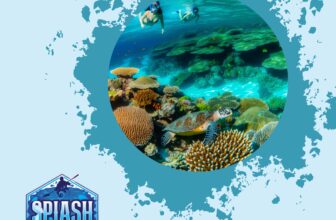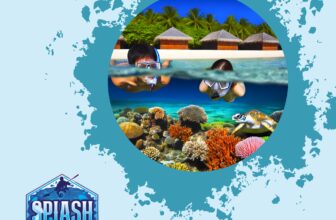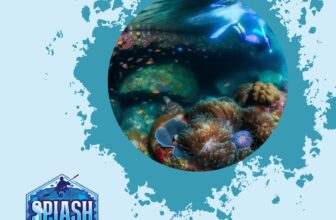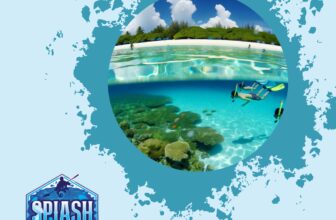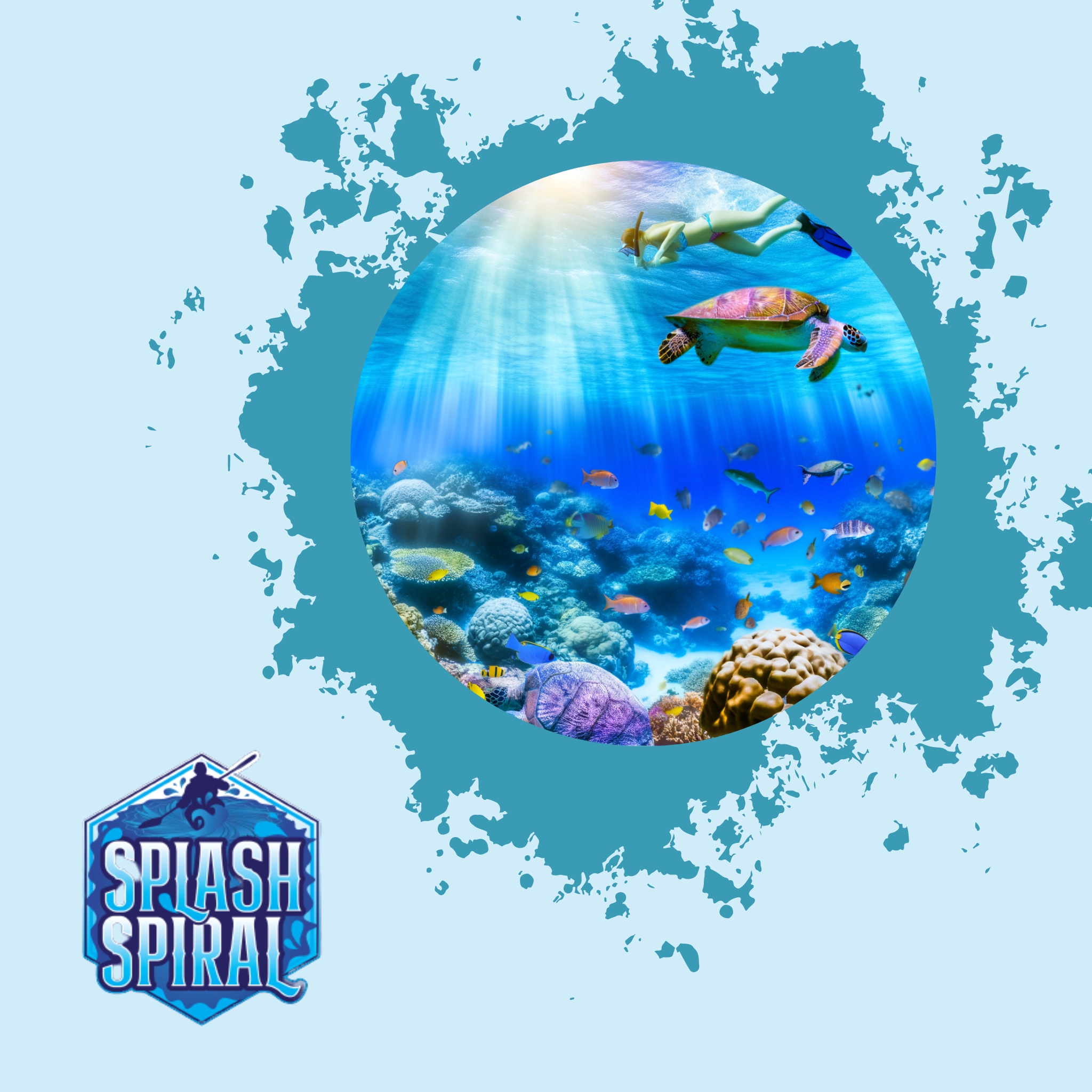
Snorkeling the Great Barrier Reef is on the bucket list of many ocean enthusiasts and adventure lovers. This natural wonder hosts an incredible variety of marine life and offers breathtaking underwater vistas that are just a snorkel away. However, to fully appreciate the reef's beauty, understanding the snorkeling visibility conditions is crucial. This guide aims to provide clear, practical insights for beginners looking to experience the clearest views in this magnificent marine park.
Understanding Snorkeling Visibility on the Great Barrier Reef
Visibility is a key aspect when snorkeling, particularly in a world-renowned location like the Great Barrier Reef. In snorkeling terms, visibility refers to how clear and far you can see underwater.
Why Visibility Matters
Imagine swimming among vibrant corals and being able to spot a colorful parrotfish weaving through the reef from meters away. That clarity is what snorkelers aim for, enhancing the experience by allowing them to fully appreciate marine life in its natural, undisturbed state.
Factors Influencing Visibility
Several factors influence visibility in the Great Barrier Reef:
-
Weather Conditions:
- Sunny days with minimal wind typically offer better underwater views.
- Calm seas prevent sediment from being stirred up, keeping waters clearer.
-
Tides:
- Lower tides generally result in clearer conditions as water movement is minimized.
-
Water Clarity Variability:
-
Recent rain or runoff can introduce particles that cloud the water.
Planning for Optimal Visibility
Understanding these elements means you can plan your trip to coincide with optimal conditions, giving you the best chance to see the reef in all its glory. Keep an eye on the weather forecast, tide schedules, and recent rainfall data to enhance your snorkeling experience on the Great Barrier Reef.
Best Times for Snorkeling for Optimal Visibility
Timing is everything when it comes to snorkeling in the Great Barrier Reef, especially if you're aiming for crystal-clear views. Visibility can vary significantly with the changing seasons, so picking the right time of year is crucial for a successful snorkeling adventure.
Seasonal Variations
Best Time for Snorkeling:
- Australian Winter Months (June to October):
- Calmer waters
- Clearer skies
- Superb visibility underwater
- Cooler, comfortable temperatures
- Minimal rainfall, reducing murky waters
- Outside the stinger season, fewer jellyfish
Challenges in Summer Months (December to March):
- Higher temperatures and more rainfall
- Storms stir up sediment, reducing visibility
- Presence of stingers (jellyfish), requiring extra caution
Day vs. Night Snorkeling
Daytime Snorkeling:
- Best for beginners
- Sunlight illuminates vibrant coral and marine life
- Optimal visibility between late morning and early afternoon
Night Snorkeling:
- Offers a unique adventure
- Underwater lights reveal nocturnal marine behaviors
- Limited visibility to flashlight beam
- Controlled environment reveals hidden wonders
- Check out night snorkeling tour options to prepare
By understanding seasonal changes and the differences between day and night snorkeling, you can choose the optimal times to explore the Great Barrier Reef for the clearest views. Whether you prefer the vibrant daytime colors or the intriguing allure of night, planning your trip around these factors will enhance your snorkeling experience immensely.
Choosing the Right Snorkeling Locations on the Great Barrier Reef
When it comes to snorkeling on the Great Barrier Reef, location is everything. Some spots are well-known for combining stunning marine biodiversity with optimal water clarity—exactly what beginner snorkelers are looking for. Here's a guide to some of the top snorkeling destinations on the reef.
Top Snorkeling Spots
Whitsunday Islands
- Highlights: Protected waters, vibrant sea life
- Must-Visit: Whitehaven Beach
- Known for superb visibility and stunning marine encounters
- Tips: Consider booking snorkeling day trips to efficiently explore the area's beauty
Low Isles
- Location: Accessible from Port Douglas
- Characteristics: Part of a marine national park zone
- Benefits:
- Conservation efforts ensure healthy coral and clear waters
- Excellent visibility conditions
- Wildlife: Ideal for observing tropical fish and turtles
Outer Reef Locations
For thrill-seekers, the outer reef provides opportunities to witness larger marine species up-close.
- Popular Choices: Agincourt and Ribbon Reefs
- Features:
- Stunning clarity and diversity
- Requires a longer boat ride for access
Maximizing Your Snorkeling Experience
Consider exploring marine parks and protected areas within the reef.
- Advantages:
- Carefully managed to ensure minimal human impact
- Pristine conditions for marine life encounters and visibility
Conclusion
By picking the right spots, beginner snorkelers can experience the Great Barrier Reef at its best, enjoying clear waters and spectacular marine life encounters.
Essential Visibility Tips for Beginner Snorkelers
For those just starting out, achieving great visibility underwater can make your snorkeling experience truly memorable. Here are some straightforward tips:
-
Gear and Equipment: First things first, invest in quality gear. A clear, tempered glass mask is your best friend, offering you an unobstructed view of the underwater world. Make sure it fits snugly to prevent leaks. Anti-fog sprays can be your secret weapon against blurry lenses. A bright-colored snorkel helps others spot you easily, while fins that fit well will help you maneuver smoothly in the water without kicking up sand or silt that can cloud visibility.
-
Techniques to Improve Visibility: How you move underwater can drastically impact what you see. Try to keep your movements gentle and relaxed. Quick, jerky motions can disturb the water and obscure your view. Float horizontally on the water's surface and keep your fins below the waterline to avoid making waves. If you're aiming for a closer look at marine life, slow down. The less you disturb the environment, the clearer your view will be.
By paying attention to your gear and perfecting your snorkeling techniques, you can significantly enhance your experience and make the most of your underwater adventure. Happy snorkeling!
Conditions Affecting Visibility: Weather and Water Patterns
Understanding the influence of weather and water patterns on snorkeling visibility is key to having a great experience at the Great Barrier Reef. Weather conditions can dramatically alter what you see underwater. For starters, rain can reduce visibility by stirring up sediments in the water, making it murky. Wind also plays a role; high winds create choppy waves, which can further cloud the water and make snorkeling less enjoyable. On the flip side, sunny days are a snorkeler's best friend. Clear skies mean sunlight can penetrate the water, illuminating the vibrant marine life and coral formations below.
Tides and currents are another crucial consideration. The tides around the Great Barrier Reef are mostly semi-diurnal, which means there are two high and two low tides each day. Timing your snorkeling adventures to align with incoming tides can often result in clearer water since the incoming oceanic water tends to be cleaner than water trapped in lagoons during low tide. However, be cautious of strong currents that can accompany rising tides; they can be challenging for beginners. Checking tide schedules and understanding the current patterns can help you pick the safest and most visually rewarding times for your snorkeling excursions.
Preparing for Your Snorkeling Adventure
Safety Guidelines
Before you even dip a toe in the water, it's crucial to get familiar with the basics of snorkeling safety. First, always snorkel with a buddy. Not only is it safer, but it makes the experience more enjoyable as you can share the marvels you encounter. Next, ensure you’re wearing a well-fitted mask and snorkel. A leaky mask or an uncomfortable snorkel can turn your snorkeling adventure into a frustrating experience. Also, familiarize yourself with the signs of marine animals and respect their space—after all, you're a guest in their home.
It’s essential to monitor the weather and sea conditions on the day of your snorkeling. Calm seas and clear skies typically provide the best experience. Moreover, use reef-safe sunscreen to protect both your skin and the delicate marine life.
Enhancing Your Snorkeling Experience
To get the most out of your snorkeling adventure, consider taking a guided tour. Guides can offer insights and point out species you might miss on your own. You can also improve your buoyancy control by practicing gentle, steady kicking, which helps you stay streamlined and reduce disturbances in the water, enhancing your visibility.
Lastly, bring an underwater camera to capture the dazzling marine life and vibrant coral gardens of the Great Barrier Reef. Remember, though, to savor the experience directly with your own eyes instead of solely through a lens. With these essentials in mind, you're well on your way to enjoying all that this underwater paradise has to offer.
Conclusion
Snorkeling the Great Barrier Reef is a journey into a vibrant underwater world, and understanding visibility can significantly enhance this experience. By paying attention to factors like weather patterns, tide movements, and selecting ideal locations known for clear waters, you can maximize your chances of encountering the reef in its full glory. Remember to equip yourself with the right gear and practice techniques that improve visibility underwater.
The Great Barrier Reef holds a treasure trove of marine life waiting to be explored — whether during the optimal snorkeling seasons or at unique night tours. For beginners, this adventure offers an incredible opportunity to witness one of nature’s wonders up close. So, gear up, dive in, and let the wonders of the reef inspire your sense of adventure and curiosity. The experience that awaits is as vast and colorful as the coral landscape itself.



